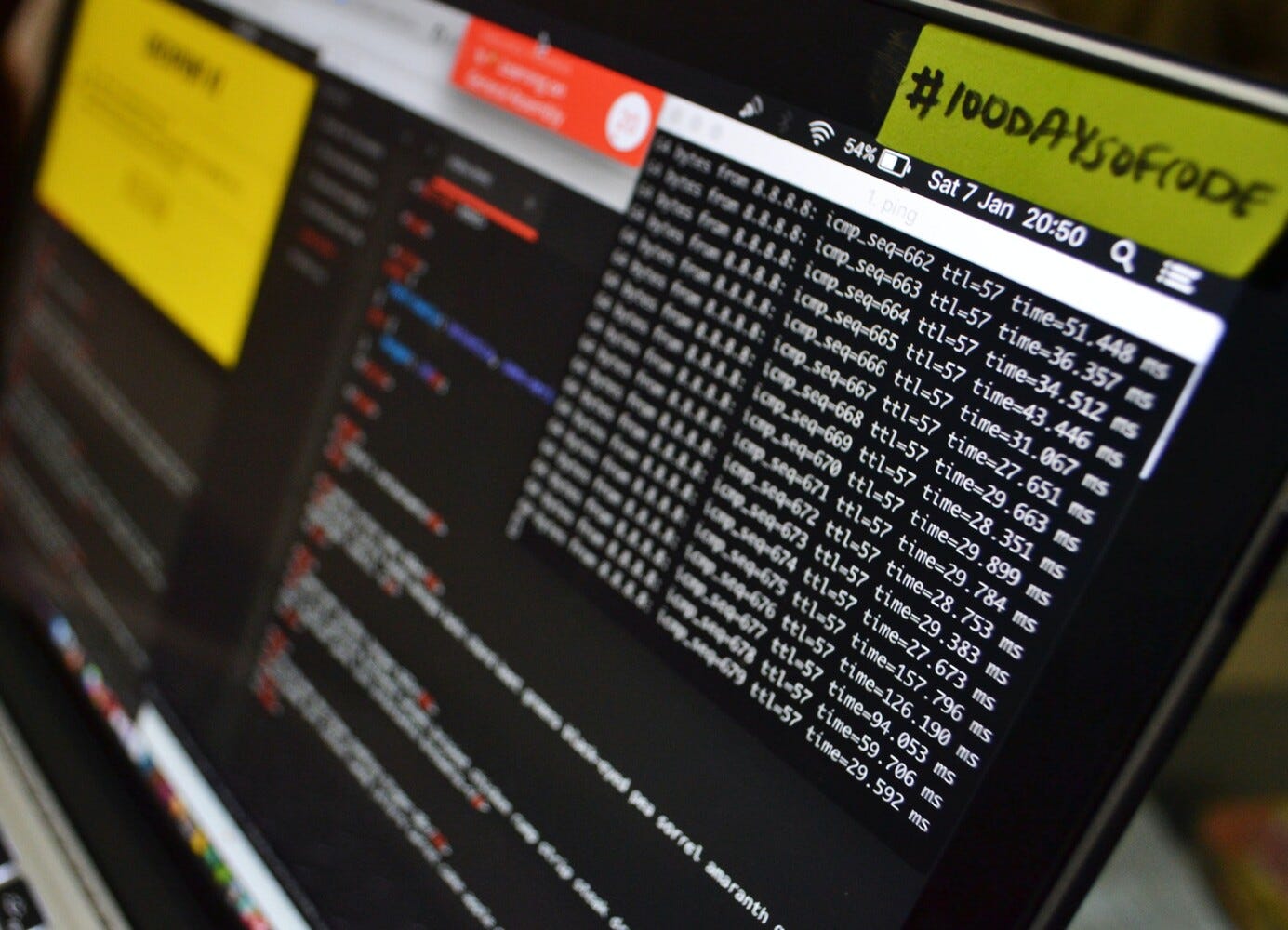[RBM] "A" - Compliance in the wild and bright world of technologies!
Navigating the Compliance Maze in Modern IT Environments
Compliance often triggers fear when organizations face massive modernization efforts and change initiatives. In today's rapidly evolving delivery environments, the speed and dynamism create numerous unknowns that can seem overwhelming to even the most seasoned professionals. Compliance departments naturally respond with increased regulations and controls, but to maintain true agility and efficiency, these processes must be automated. Without comprehensive automation, what begins as a dynamic process gradually becomes static, eventually reverting to manual procedures that slow innovation and create bottlenecks. In this article, I'll share detailed insights on approaching the necessary changes in this area and provide practical guidance on building effective Compliance as Code solutions that can transform your organization's approach to regulatory requirements.
The Modern Compliance Challenge
Let's start by localizing compliance issues that can cause problems in the modernized world. The main concern involves the computation and storage of sensitive data, both generally and in detail. It's regularly challenging to identify which data is truly sensitive and which can be safely anonymized, extending our concern to data management as a whole. Many organizations struggle with creating clear data classification frameworks that can be consistently applied across their technology landscape.
Upon closer examination, we need updated regulations across several critical areas: data collection, transfer, computation, metrics, and logs containing user information. Important questions emerge about who can access this data and what actions they're permitted to take with it. This issue becomes particularly challenging as cloud environments gain popularity, creating uncertainty about whether external parties—like cloud database providers—can access our information. The traditional perimeter-based security model is rapidly becoming obsolete as data flows across multiple environments, devices, and third-party services.
There's also significant concern about non-production data in test and development environments. Ideally, this data would be synthetic (generated), which would solve the problem entirely by eliminating exposure of real customer information. However, since we don't live in a perfect world, many teams look for shortcuts by using some form of production data in these environments, creating new security and compliance challenges that can lead to serious breaches and regulatory violations. The pressure to deliver quickly often conflicts with proper data handling procedures, creating a tension that must be carefully managed.
In regulated environments such as banking, insurance, health care systems, or even telecommunication companies—where almost every country imposes some form of regulation—complexity increases significantly. International companies face numerous challenges as a result, typically requiring separate systems across different regions to manage compliance requirements. This separation becomes necessary to maintain consistent functionality while complying with each country's specific regulatory requirements, from GDPR in Europe to HIPAA in the United States, PIPEDA in Canada, and countless other frameworks worldwide. The patchwork of regulations creates a complex landscape that requires sophisticated strategies to navigate successfully.
Data: The Core of Compliance Concerns
Data stands as the primary focus of security concerns, yet it remains the cornerstone of the information technologies industry. In today's highly dynamic environments, companies must evolve their approach to security by implementing forward-thinking policies such as Security First, SecDevOps, Compliance as a Service, and Compliance as a Code. These approaches recognize that security and compliance cannot be bolted on at the end of development but must be woven into the fabric of the entire software development lifecycle.
Let's break down these modern buzzwords to better understand what actions we need to take, while also exploring potential new solutions that can transform compliance from a roadblock to an enabler of innovation.
Shifting Security Left
Shifting Security Left, or Security First, involves integrating security solutions at the earliest stages of the software delivery process. This approach makes developers and architects directly responsible for creating software that's secure from its foundation, rather than relying on security teams to catch issues after code is written. Typical solutions in this space require specialized tools that analyze code from multiple security perspectives, including vulnerability scanning, dependency analysis, and compliance checking. Through these tools, we can verify that our software complies with expected security standards and requirements before it moves further in the development pipeline.
As a result, software development has evolved into an area where security departments must actively participate—both in selecting appropriate security solutions and defining the correct rules for examining and evaluating software. This collaborative approach bridges the traditional gap between development and security teams, creating a shared responsibility model that improves both security outcomes and development efficiency.
SecDevOps: Integrating Security Throughout the Pipeline
The second trend is SecDevOps or DevSecOps—it goes by many names but represents the same fundamental shift in thinking. This approach integrates security rules early in both development (as mentioned in the first point) and deployment of software across development and test environments. The core concept is to simulate production environments as early as possible and test them against security requirements, ensuring that security issues are caught before they reach production.
The key difference here is that changes occur frequently in these environments, and manual security testing would consume excessive time and resources, creating bottlenecks that undermine the agility that DevOps aims to achieve. This creates an important opportunity for Security departments to actively engage in the development process by automating security checks and providing self-service tools that development teams can use to validate their work against security requirements. When implemented effectively, SecDevOps creates a continuous feedback loop that improves both security posture and development velocity.
Compliance as a Service and Compliance as Code
The last two approaches—Compliance as a Service and Compliance as a Code—both offer robust compliance validation solutions that can transform how organizations approach regulatory requirements. These include specialized scanners (Compliance as a Service) and rules engines (Compliance as a Code) that validate our code and environments against established compliance frameworks and internal policies.
This approach enables us to detect rule violations early and automatically block them when necessary, preventing non-compliant changes from progressing through the pipeline. Furthermore, it gives us the flexibility to easily extend these rules through Compliance as a Code, adapting to new requirements without major rework of our systems. Decisions in these systems can be made automatically or integrated into the software delivery process—for instance, by incorporating compliance checks during code reviews or as gates in the CI/CD pipeline.
By codifying compliance requirements, organizations can create a single source of truth that ensures consistent application of rules across all environments and projects. This improves compliance outcomes and creates an audit trail that demonstrates due diligence to regulators and stakeholders.
Preparing for the Compliance Transformation Journey
There's a lot of work ahead for organizations looking to modernize their compliance approaches. Compliance and Security departments typically aren't prepared for modernization projects and may lack the technical expertise to fully understand the implications of new technologies and methodologies. When an external proposal arrives, it often exposes the need for change in these areas, creating resistance and uncertainty that can derail transformation efforts.
While drafting your proposal, you need to thoroughly understand the current state of these departments and their existing processes. Make sure to incorporate necessary changes to Compliance and Security into your plan—this will affect your budget, timeline, and staffing requirements. Consider including training programs, tooling investments, and possibly new roles that can bridge the gap between technical teams and compliance functions.
Unfortunately, there's also a place for status quo defenders who may resist change out of fear or comfort with existing processes. Put them on a bus (metaphorically speaking) and help them navigate the new world by demonstrating how modern compliance approaches can actually make their jobs easier and more effective. Be well-informed and ready to provide them with detailed information and concrete ideas on how to introduce necessary changes. Additionally, I'd appreciate it if you could identify people willing to assist with implementation—change champions who understand both the technical and compliance aspects of the transformation. These departments typically lack staff who are fluent in information technology, so building bridges between technical and compliance teams is essential.
Be prepared that your proposal might not be implemented if it requires significant changes to existing compliance measures. Keep an open mind and develop a second option that offers a partial solution—either addressing some compliance requirements or meeting your objectives in a more achievable way. This phased approach can help build confidence and demonstrate value before tackling more challenging aspects of compliance transformation.
Real-World Considerations
When implementing these modern compliance approaches, consider the following practical aspects:
Tool Selection: Choose tools that integrate well with your existing development environment and can be easily adopted by your teams. The best compliance tools are those that developers actually use.
Policy as Code: Invest in frameworks that allow you to express compliance policies as code, making them versionable, testable, and automatically enforceable.
Continuous Education: Both technical and compliance teams need ongoing education about evolving regulations and technologies. Create forums for knowledge sharing and cross-functional learning.
Metrics and Visibility: Develop clear metrics that show the effectiveness of your compliance program and provide visibility into compliance status across all systems.
Automation Balance: While automation is key, recognize that some compliance aspects still require human judgment. Design your processes to leverage automation where appropriate, while incorporating human oversight where required.
What are your thoughts about the complications compliance and security introduce in the rapidly evolving world of IT? Have you successfully implemented any of these modern approaches in your organization? What challenges did you face, and how did you overcome them? Please share your experiences and perspectives in the comments below.




